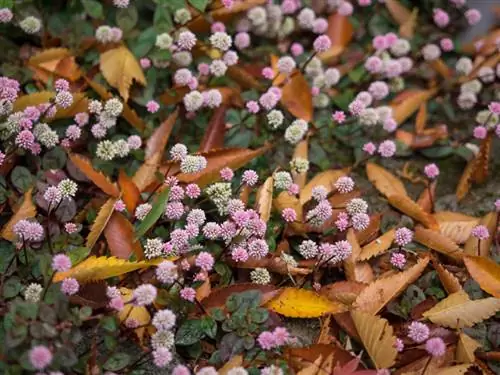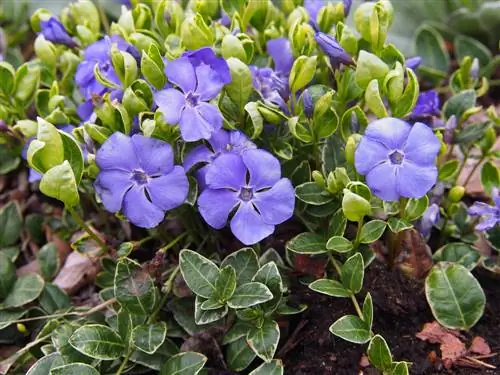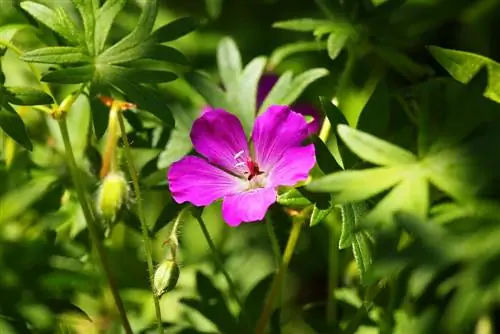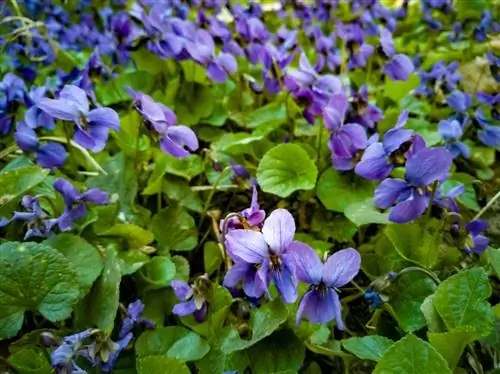- Author admin [email protected].
- Public 2023-12-16 16:46.
- Last modified 2025-06-01 06:02.
Most thyme species grow upright and form subshrubs. However, there are also a number of varieties - either naturally occurring or specially bred - that remain very low and grow to cover the ground. These cushion thymes are usually resistant to wear and tear to a certain extent.

How can you use thyme as a ground cover?
Ground cover thyme is ideal as a natural weed control and requires sunny, dry locations with nutrient-poor soil. Popular varieties include Thymus cherlerioides and Thymus praecox. Plant 7-10 thyme plants per square meter for optimal coverage.
Benefits of thyme as a ground cover
It used to be considered aesthetic to give each plant in the border some space around it, i.e. H. as an individual, to draw. However, since bare earth usually does not remain bare, such a garden is a paradise for wild weeds and is therefore very labor-intensive. For this reason, modern gardeners find it more useful to let groups of plants flow into each other, creating a blanket of green. This type of ground cover keeps weeds away and significantly reduces the amount of work required for the borders.
Suitable varieties
The various types of cushion-forming thymes generally remain quite low and reach heights of between two and ten centimeters. Over time, the fast-growing plants develop real mats that are almost impenetrable. Just like conventional types of thyme, cushion thymes can also be used in the kitchen and as a medicinal herb. Thyme mats look particularly pretty between June and July, when the plants are in full bloom and form a dense, fragrant carpet of flowers.
- Thymus cherlerioides (cushion or field thyme) is a lawn-forming dwarf shrub that occurs wild on the Balkan Peninsula and in the Crimea. It blooms bright purple to scarlet red.
- Thymus praecox - numerous low-growing and cushion-forming varieties, e.g. B. Atropurpurea (profusely purple flowers) or Minor (particularly flat and hard-wearing)
Planting ground cover thyme
Ground cover plants are competitors of weeds and therefore provide effective weed control. However, you need to give the ground-covering thyme plants you want a head start: Plant the plants in previously thoroughly worked, weed-free soil. Also plant them through a plastic mulch (€27.00 on Amazon) - such as a plastic sheet with holes perforated at regular intervals - and hide it with gravel; You can now reduce your garden weeds to a minimum and give your young plants a valuable growth advantage. You need between seven to ten thyme plants per square meter, which corresponds to a planting distance of between 20 and 25 centimeters.
Choose the right location
All thymes love a sunny spot in a dry, not too nutrient-rich soil - of course cushion thymes are no exception. For this reason, ground-cover thyme does not belong under shade trees, shrubs or perennials; However, it is very suitable for use in rock or gravel gardens as well as for planting terrace beds and embankments. Dry stone walls or troughs can also be easily greened with cushion thyme - then the plants grow slightly overhanging.
Tips & Tricks
Although cushion thyme is sturdy, it is nowhere near as strong as conventional lawn. For this reason, herb lawns are mainly planted in places that are difficult to access for lawnmowers or should only be accessed rarely. It is not suitable for playing and running around. If your path still leads through there regularly, you should create a paved path to protect the plants.






